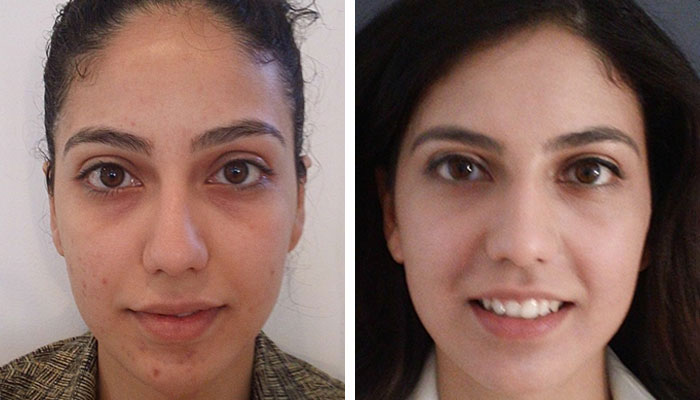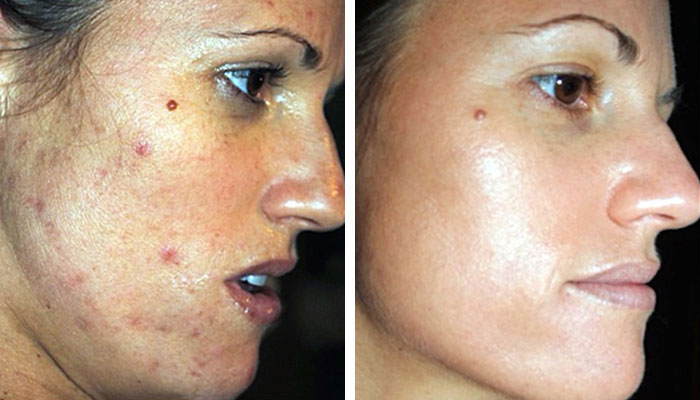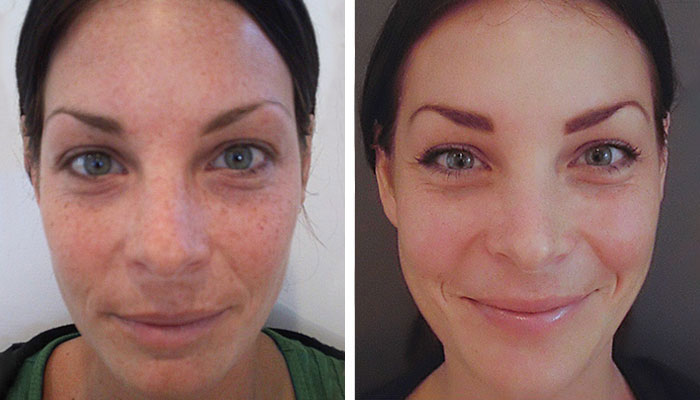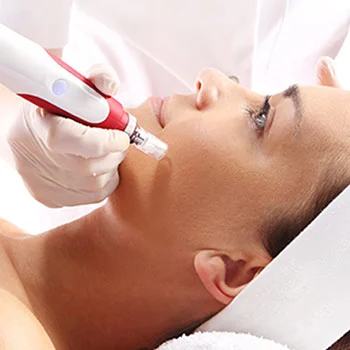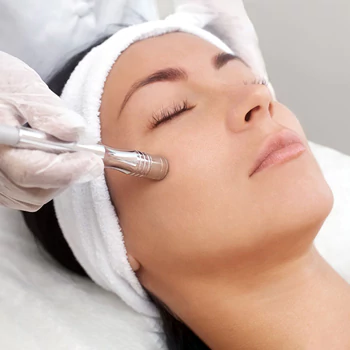What is a chemical peel?
Chemical peel might sound intimidating but it is nothing new to your skin. Peeling is a natural process that your skin goes through daily. When you speed up that process with the help of some safe chemicals, you achieve a more dramatic result that is more smooth and supple. It is that simple. A chemical peel is a simple procedure that makes your skin renew itself much faster.
A chemical peel, sometimes called dermapeeling or chemexfoliation, is a non-invasive procedure in which your skin is exposed to some medical-grade chemical solutions to peel the damaged outer layers and replace them with new skin that is younger, brighter, and smoother.
Chemical peeling is mainly used for facial rejuvenation but the hands, neck, chest, and other areas can also greatly benefit from it as it can tighten the skin and smooth out fine wrinkles and roughness. It can be done on its own or in combination with other treatments to achieve better results.
The procedure must be performed by an experienced dermatologist or dermatologic surgeon. It is performed in an office or surgical facility on an outpatient basis.
What does a chemical peel treat?
Chemical peels are typically used for rejuvenation of the face, neck, and hands. The procedure improves the overall appearance of the skin, making it clearer, smoother, and more healthy-looking.
A dermapeeling procedure can be used to improve a wide range of skin issues, including:
- Fine lines and wrinkles
- Acne
- Acne scars
- Mild scars
- Age spots, liver spots, and freckles
- Melasma
- Hyperpigmentation
- Sun damage
- Dull or rough skin
- Precancerous growths (actinic keratosis)
Who is the ideal candidate for a chemical peel?
Anyone with good general health can consider a chemical peel treatment for aging, discolored, or scarred skin. Pregnant women may not be good candidates for this treatment. Individuals with frequent outbreaks of cold sores (herpes) do not respond well to this treatment.
People with all skin types can have light chemical peels but those with darker skin colors may be at greater risk of hyperpigmentation after the procedure. Generally, a dermapeeling isn’t recommended for those who:
- Have a naturally dark complexion
- Have a history of abnormal scarring such as keloids (overgrowth of scar tissue)
- Take medicines that make the skin sensitive or have sensitive skin or other conditions
- Had certain acne treatments or medicines recently, including isotretinoin (Myorisan or Claravis)
- Have to stay in the sun for prolonged periods
What to expect before a chemical peel?
Chemical peeling is performed at 3 levels or depths but regardless of the intensity, the process will be discussed extensively during your initial consultation before the procedure so you will have a chance of expressing your goals and desires to your doctor. You can also ask for before and after photos of other patients to get an idea of chemical peel results.
The doctor will consider your ideal type of peel in the context of your medical history, pre-existing health issues, hereditary factors, and smoking history. A physical exam might be done to evaluate your skin health.
Your doctor will explain the depth of the peeling that suits your needs and suggest a personalized one for you to achieve the best results for your skin problems.
Before the peel, some antiviral medication might be prescribed to prevent infection as your skin will be vulnerable to germs. Depending on your circumstances you might be given some retinoid cream or a bleaching agent to prepare the skin.
How chemical peels are done
The procedure starts with cleaning your face to remove excess oil, covering your hair with a hat, and protecting your eyes with tape, goggles, gauze, or some ointments.
The practitioner will apply chemical solutions to your skin. The solutions used in this procedure are typically glycolic acid, salicylic acid, trichloroacetic acid, carbolic acid (phenol), or lactic acid. These substances penetrate into different depths of the skin and are chosen depending on the depth of chemical peeling you need.
Levels of chemical peels
Chemical peels are performed at 3 main levels or depths
Light (superficial) chemical peel
As superficial chemical peel only removes the epidermis, the outer layer of the skin, to address uneven tone or texture resulting from acne, dryness, and fine wrinkles.
In a light peel, your doctor will use a brush or cotton ball to cover your face with a chemical solution that is typically glycolic acid or salicylic acid. It will whiten the skin and cause a slight stinging sensation. Soon a neutralizing solution is used to remove the chemical from your treated skin.
Your skin will mildly be red and irritated for a couple of days, which can be soothed with a protective ointment such as petroleum jelly. Within a week, it will heal but the new skin might have a lighter or darker tone temporarily, which will be resolved after full recovery.
With this level of treatment, you might need a few sessions to achieve your desired result but the downtime is short.
Medium chemical peel
This level not only removes the epidermis but also the upper layer of the dermis, which is the middle layer of the skin. Medium-depth wrinkles, scars, and tones can be addressed with a medium chemical peel in multiple sessions to maintain the results.
In a medium-depth dermapeeling, your doctor may numb your skin with topical anesthetics or you might be given painkillers to relieve the pain resulting from the process. A cotton-tipped applicator or gauze will be used to apply the chemical solution which contains trichloroacetic acid sometimes combined with glycolic acid. It will whiten your skin with some stinging and burning sensations that might last for 20 minutes. During this time, however, cool compresses will be applied to soothe your skin.
Your skin will be red and swollen after the procedure and it may be protected by an ointment such as petroleum jelly. It takes about a week for your skin to recover. During this time, you may need to use ice packs to soothe your treated area. You will likely be back in the office for a checkup by your doctor. If needed, OTC pain killers might be prescribed that include ibuprofen (Advil) and naproxen sodium (Aleve).
In the healing process, a crust will be formed on your skin that might be dark and brownish. It takes at least 2 weeks to heal from this level of peel but some redness might remain for months. The result is clearer, more even, and noticeably smoother skin.
Deep chemical peel
As the name implies, a deep peel removes the skin from deeper layers to address deeper issues such as deep wrinkles and scars. This is the best chemical peel for aging signs, deeper wrinkles, extensive sun damage, and severe acne scars. It is often a one-time-only procedure due to the strength of chemicals.
The procedure starts with intravenous (IV) fluids, and heart rate monitoring. Your skin might also be numbed by topical anesthesia. A cotton-tipped applicator is used to apply carbolic acid (phenol) to the treated area which will turn white or grey immediately. Given the strength of phenol used in this procedure, the substance is applied in small portions every 15 minutes. That is why a facial peel treatment might last up to 90 minutes.
Severe redness and swelling will follow with a burning sensation that might shut your eyelids. The treated area must be covered in the ointment 24/7 for the next 2 weeks.
New skin will develop after 2 weeks but redness remains for months. The new skin tone might be darker or lighter. After this period, sunscreen must be applied for protection.
It is better to stay at home during your deep chemical peel recovery period but you will need to visit your doctor for checkups. Follow the directions given by your doctor for cleansing and moisturizing routines. Do not rub, pick or scratch your skin. This level will deliver a dramatic makeover but it takes several months to reveal it.
What are the risks and side effects of a chemical peel?
Common side effects of chemical peels are mild and temporary. They include:
- Dryness
- Redness
- Swelling
- Burning
- Stinging
More significant but less common risks of chemical peels, which are more common in deep peels, include:
- Infection
- Darkening or lightening of the skin (more common in people with dark complexions)
- Permanent scars
- Damage to the heart, kidneys, or liver caused by the phenol used for the process
The risk of developing serious complications after a chemical peeling procedure can be minimized by choosing a well-trained and qualified specialist with relevant experience.
How much does a chemical peel cost?
According to the American Society of Plastic Surgeons, the average cost of a chemical peel in 2020 was $519. The price is determined by the doctor's experience, location, and peel level. Chemical prices range from $200 to $6000 depending on these factors.
FAQs
Is a chemical peel worth it?
A chemical peel is an effective treatment that offers real benefits. The peeling process might make your skin look red or irritated temporarily but after the recovery, the fresh look will make up for the downtime.
Are at-home facial peels good?
You might achieve some positive changes with at-home chemical peels but the effectiveness of results is not comparable to a professional in-office chemical peel.
When will I see the results of my chemical peel?
If you have a superficial peel, you can see the result in one day, but for deep peels, it may take up to two weeks for the results to show up.
Can I have another chemical peel after getting one?
You can have repeated light and medium chemical peels but it is not safe to have more than one deep peel. Make sure to inform your dermatologist in case you had a previous chemical peel and want to get a new one.

